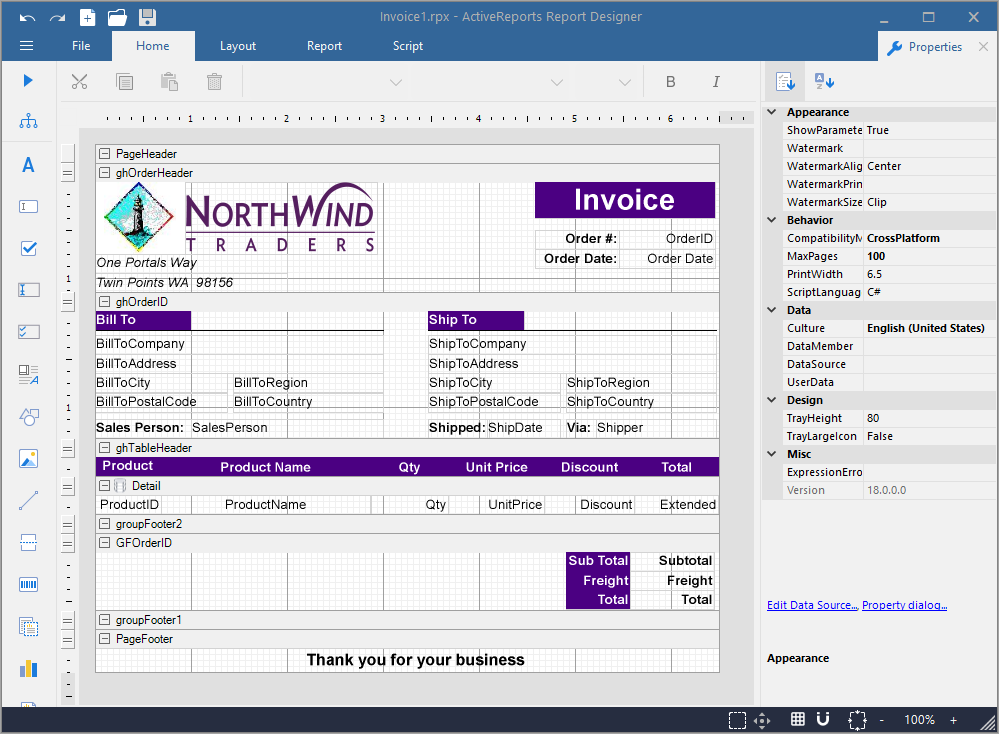Section Report

In a Section report (.rpx) layout, you design reports in banded sections. A PageHeader, Detail and PageFooter section appear by default, and you can remove any but the detail section. Right-click the report and select Insert to add other section pairs like ReportHeader and ReportFooter, or GroupHeader and GroupFooter.
You can hide any section that you do not want shown by setting the Visible property of the section to False.
Code-based Section Report
When you add an ActiveReports 19 Section Report (code-based) to your Visual Studio project, report layouts are saved as C# or Visual Basic files within the project in which they are created. These files are compiled into the application when you build it.
type=note
Note: In Visual Studio 2022, only .NET Framework 4.7.2 and 4.8 are supported for code-based section reports.
This type of report is the most flexible in terms of what a .NET developer can achieve using code. It has an extensive API and is event-based, which allows you to control all aspects of the report and how it is generated. If you like, you can even build a report completely in code.
Xml-based Section Report
When you add an ActiveReports 19 Section Report (xml-based) report to your Visual Studio project, the layout is saved as a standalone Report XML (RPX) file. Since these files are not compiled into your application, they are a good option for solutions in which you need to update or add reports frequently.
The RPX format cannot contain Visual Basic.NET or C# code. Instead, you can add VB.NET or C# script in the Script view of the report.
type=note
Note: You can combine multiple Section reports by combining the RDF document. For details, see Work with RDF Document.


